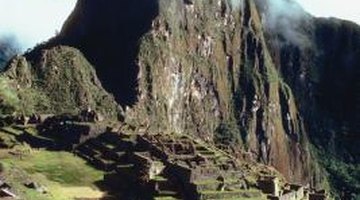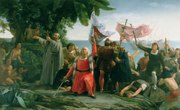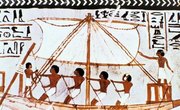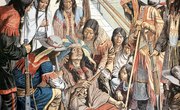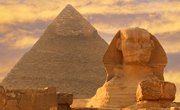Listed as one of the new Seven Wonders of the World -- a list voted on by over 100 million people in 2007 -- Machu Picchu is an abandoned citadel among the escarpment of the Peruvian Andes Mountains. Many theories have attempted to explain Machu Picchu's architecture and purpose, yet it remains an enigma to modern scholars.
Bingham's Lost Haven
In July 1911, Hiram Bingham, a Yale University professor, sought to uncover the ruins of Vilcabamba, a legendary Peruvian lost city. After traveling five days from Cusco, Bingham stumbled upon the towering stone structure of Machu Picchu, which he thought was Vilcabamba. Bingham also theorized that the site was once a convent where women, known as Virgins of the Sun, learned to serve the Incan leader and his inner circle. Bingham developed this theory because he believed at least 75 percent of the skeletal remains found at the site were female; however, modern research has shown that the remains were 50 percent female and 50 percent male.
A Haven for Royalty
Richard Burger, Lucy Salazar-Burger and John Lowe, archaeologists specializing in the central Andes, argue that Machu Picchu was a "panaca." Panacas were royal retreats for Inca rulers. According to this theory, Machu Picchu was a luxurious estate where the king and his entourage could hunt, entertain and host Inca nobles and foreign aristocrats. Lowe, Burger and Salazar-Burger base their claims on archaeological evidence such as masonry, settlement size and the lack of an economic infrastructure. The functionality of the architecture reveals that three classes of people frequently inhabited Machu Picchu: royalty, nobles and servants. It is speculated that Inca royalty spent summer months in Machu Picchu away from the frigid Cusco evenings.
Geographical Sacred Haven
According to archaeologist Dr. Johan Reinhard, the Inca may have built Machu Picchu to honor the geographical features of the Amazon River Basin and surrounding mountains. Based on what he calls "sacred landscape," Reinhard notes that the Urumba River, venerated by the region's local inhabitants, encloses Machu Picchu, and would have made them consider it the nexus of hallowed ground. In addition, natives thought the surrounding mountains were sacredly aligned with the sun's rays during solstices and equinoxes. Reinhard suggests that the Inca -- who believed they were direct descendants of the sun -- built many Machu Picchu structures due to their reverence for the sun.
Holy Haven for Pilgrims
Giulio Magli, an Italian archaeological astronomer, proposes that the Inca ritualistically traveled from Cusco to Machu Picchu. The Inca took this pilgrimage to replicate the mythical journey that the first Inca thought their ancestors took from the Island of the Sun in Lake Titicaca. Magli believes that the pilgrimage concluded at the highest peak in the main ruins, the steps leading to the Intihuatana stone.
Related Articles
References
Resources
Writer Bio
Janet Rutherford began her writing career in 2006. She served as an English teacher and education consultant for 15 years. She earned a Bachelor of Arts in English education from Rust College and a Master of Education in educational leadership from the University of Mississippi.

